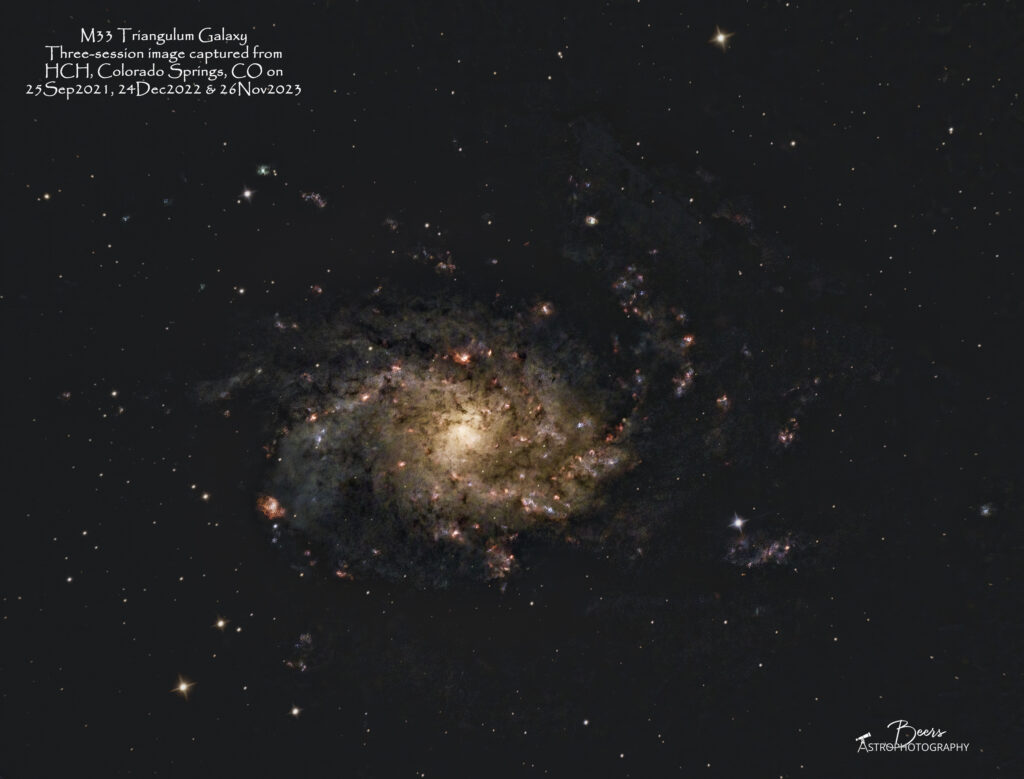
Three-session image of M33 Triangulum Galaxy
We had a clear night on 26 November 2023, albeit at the Bortle 6 front patio with essentially a full moon, but one MUST take advantage of any clear night – especially this year, when they’ve been so few and far between. Mother Nature’s cloudy mood canceled our December dark skies trip (there was not a clear sky anywhere in the Colorado or New Mexico dark sky areas (or at home for that matter)). So, I spent the time we were going to go out and capture new data processing the data I had, starting with the recently collected M33 Triangulum Galaxy.
I processed the 26Nov2023 M33 data, captured during an essentially Full Moon (98.5% Waxing Gibbous) from the front patio, requiring the use of the Optolong LeXtreme filter (that produces an image that is almost exclusively red). After I finished, I looked back at the previous images I’d captured (one per year in 2021 and 2022) that, although they were also captured from the front patio, showed much more color. The 25Sep2021 was captured with the Canon EOS Ra at ISO800 without any light pollution filters because I didn’t own any at that point. The 24Dec2022 image was captured with the Canon EOS Ra at ISO3200 with the LPro filter because it was essentially New Moon (1.3% Waxing Crescent).
So, I decided to create a multi-session image combining the data from all three sessions to see what that might look like. Astro Pixel Processor (APP) does an amazing job of stacking diverse data sets – in this case three data sets captured using two different cameras (Canon EOS Ra and ASI2400 MC), two different telescopes (Big Bertha, 8″ R-C and Big Zeus 10″ R-C), three filter variations (none, LPro, and LeXtreme), and with/without the Field Flattener. Although the resulting stack did have a bit of a “Frankenstein” look to start off the with because of the different framing angles with each session – I’m pleased with the resulting image.
Check out the gallery page at: https://beersastrophotography.com/gallery/m33-triangulum-galaxy/ to see each of the “individual images” (in quotes because that’s not how this image was produced) that comprises the three-session image.
